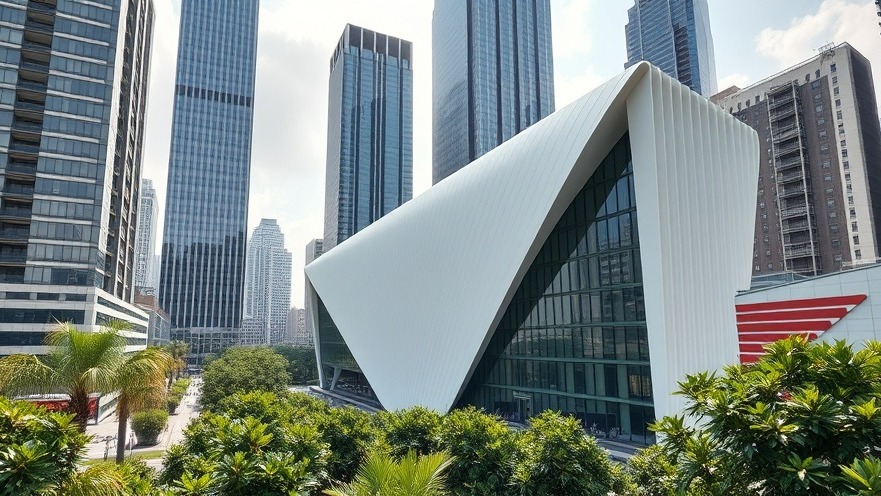
Elevating Spaces: The Mastery of SANAA
The renowned Japanese architectural studio SANAA, led by the visionary duo Kazuyo Sejima and Ryue Nishizawa, continues to redefine the boundaries of modern architecture. Winning the prestigious 2025 Royal Gold Medal from the Royal Institute of British Architects (RIBA) is yet another testament to their impactful contributions to the architectural landscape. A significant recognition, it highlights the studio's ability to merge functionality with profound elegance, something that resounds well not just in architectural circles but also among individuals who seek inspiration in their own living and working environments.
Design Philosophy: Bridging Nature and Society
SANAA's architectural philosophy is intimately connected to the belief that buildings play a crucial role in transforming lives. "We have always believed that architecture can transform and repair environments, helping us to relate to our surroundings, nature, and each other," the studio states. This perspective invites parallels with the current trend among digital nomads, who increasingly prioritize comfortable and efficient workspaces that harmonize with their lifestyles. The studio’s emphasis on space that fosters interaction and connectivity mirrors the desires of remote workers for designs that not only serve practical purposes but also nurture well-being and inspiration.
Creating Workspaces: Inspired by Cultural Landmarks
Among the remarkable projects that illustrate SANAA’s design philosophy is the 21st Century Museum of Contemporary Art in Japan (2004). This circular glass structure redefines public space, integrating galleries with a library and children’s workshop. Similar to how this iconic design invites cultural engagement, digital nomads can draw lessons in crafting home workspaces that inspire creativity and learning.
Moreover, the New Museum of Contemporary Art in New York (2007) combines urban elegance with functionality, offering generous natural light through innovative layering of its white aluminum mesh exterior. Such a thoughtful design can inspire remote workers to overcome the challenges of home office setups, emphasizing the importance of natural light and openness in their workspace.
Functional Aesthetics: Bringing the Outdoors In
A major feature of SANAA’s approach involves the seamless integration of nature. The 2009 Serpentine Gallery Pavilion is a striking example, with its floating aluminum canopy creating a tranquil oasis amidst the urban park. For digital nomads working from home, introducing natural elements—whether plants, natural lighting, or outdoor views—can replicate this tranquil atmosphere. Such connections to nature foster emotional health and can keep productivity high.
The Future of Workspace Design: Learning from Influential Projects
The Rolex Learning Center in Switzerland (2010) exemplifies a blend of ergonomic design and functionality aimed at enhancing productivity. With its undulating roof sheltering collaborative spaces, it emphasizes communal learning which resonates strongly for remote workers. By designing work environments where creativity meets functionality, they too can find a sanctuary conducive to focus and interaction.
Similarly, the Louvre-Lens in France not only stands as a remarkable piece of architecture but also raises questions about how art and design influence everyday work environments. Digital nomads can draw inspiration from such transformative spaces to elevate their own work setups, utilizing design not just for the sake of aesthetics but as a facilitator of well-being and productivity.
The Power of Thoughtful Design
As we reflect on SANAA's influential projects, it becomes clear how their dedication to creating spaces that encourage interaction holds valuable lessons for digital nomads. By recognizing the importance of design in fostering not just productivity but community, individuals can create environments that make remote work not only functional but also enriching.
Summary: The architecture of SANAA reminds us to prioritize design that invites connection, functionality, and beauty. This holistic perspective can guide digital nomads in crafting their workspaces, creating environments that are sources of inspiration and comfort.
 Add Row
Add Row  Add
Add 




Write A Comment